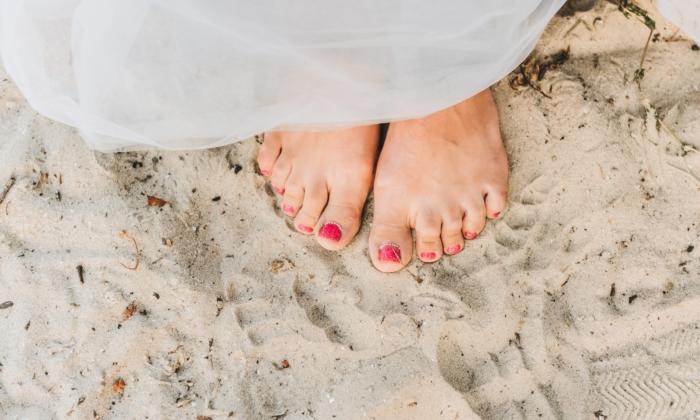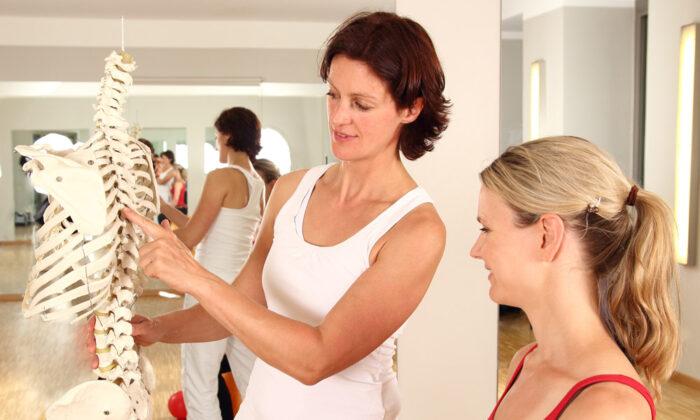Our body and biological systems are interconnected in myriad ways, and oftentimes an abnormality in the physical condition of our extremities—nails, feet, hands, hair—might be a warning sign our body is sending about our internal health.
1. Wounds That Don’t Heal
If wounds cannot heal, it may be a very serious problem. The feet belong to the peripheral parts of the body. The inability for wounds in peripheral parts of the body to heal is often related to metabolism.This may indicate a problem with the pancreas. For instance, insulin resistance, hyperglycemia, and diabetes may all cause wounds on the feet to be slow to heal.
2. Persistent Cold Feet
Cold feet are related to the body’s circulation. When blood circulation is poor, the temperature at the end of the limbs cannot be regulated well so the feet will always feel cold. Women are especially prone to this problem.3. Sudden Enlargement of the Toe
There are many factors that contribute to the sudden enlargement of the toe.Generally speaking, when infected with bacteria or inflamed, such as in the case of paronychia, the toe will become red and swollen, accompanied by heat, pain, and other symptoms.
Gout also causes swelling in toe joints.
Toenails can also become thicker and coarser due to mold infection. Gray nails then form, which also makes the toes look larger.
Another common cause is rubbing and friction, which make the skin on the feet thicken and grow calluses and foot corns.
Or, infected with a virus, the skin grows viral warts similar to foot corns.
Check whether a few toes or all toes are affected: if it occurs in individual toes it is likely due to germ injection or friction. if all five toes on one foot or both are affected, it’s more serious. It could be due to lung lesions. In serious cases it could be due to cancer.
4. Frequent Foot Cramps
Foot cramps often occur in the middle of the night. Some people sleep when the room temperature is very low, or they have the air conditioning or electric fans on. In this case, when they stick their feet out of the blanket, they may experience cramps. And women are more likely to have foot cramps than men.Muscle contractions and spasms cause foot cramps. Vasculitis of the blood vessels deep within the body, or vasospasm, may also cause cramps. In such cases, the cramps tend to be very painful.
Most people’s foot cramps may also be related to the imbalance of electrolytes in the body. People with potassium ion and calcium ion imbalances have a relatively large probability of developing foot cramps.
In general, patients with chronic kidney diseases and/or diabetes also experience frequent foot cramps.
In order to relieve cramps, the first thing to do is to find out the cause. You can get a blood test to see if there is an electrolyte imbalance or deficiency and supplement electrolytes if this is the case.
5. Numbness of the Feet
Numbness of the feet is a manifestation of nerve conduction being affected.Sitting the same way for too long may cause poor circulation, thus affecting the nerves.
And when some people with a weak spine perform certain movements, it can compress the nerves, causing numbness in the feet.
6. Heel Pains
There are many causes of heel pains, and some tests must be performed to confirm the final diagnosis.7. Itching and Peeling Feet
When many people see itching and flaking feet, they first think of athlete’s foot, also known as tinea pedis.There are three types of athlete’s foot. The peeling skin is a symptom of the chronic hyperkeratotic tinea pedis. There is also the phenomenon of the thickening of the soles, which may occur in the heel or the forefoot area, but the skin is not too itchy.
The other two types of athlete’s foot are vesiculobullous tinea pedis and ulcerative tinea pedis. The patients with these conditions usually have vesicles or even blisters between their toes. The itchiness of the foot would be more pronounced at this point. Many people keep rubbing their feet until the skin becomes broken or hurts.
8. Yellow Toenails
There are many causes for yellow toenails. Poor liver or kidney function and metabolic problems may cause the nails to turn yellow.Yellow toenails may also be the result of mold infection, excessive friction, or regular nail polish usage.





Friends Read Free